Latest PCE inflation data doesn't support another US rate hike
While headline PCE inflation rose in August (3.5% vs 3.4% in July) on account of higher gasoline prices, a deeper look at the latest PCE inflation data shows that disinflation is deepening, and that now is not the time for additional interest rate hikes.
Monthly movement
Headline PCE inflation saw higher growth in August (up 0.4% MoM), but this was largely driven by a jump in the gasoline and other energy goods category (up 10.2% MoM).
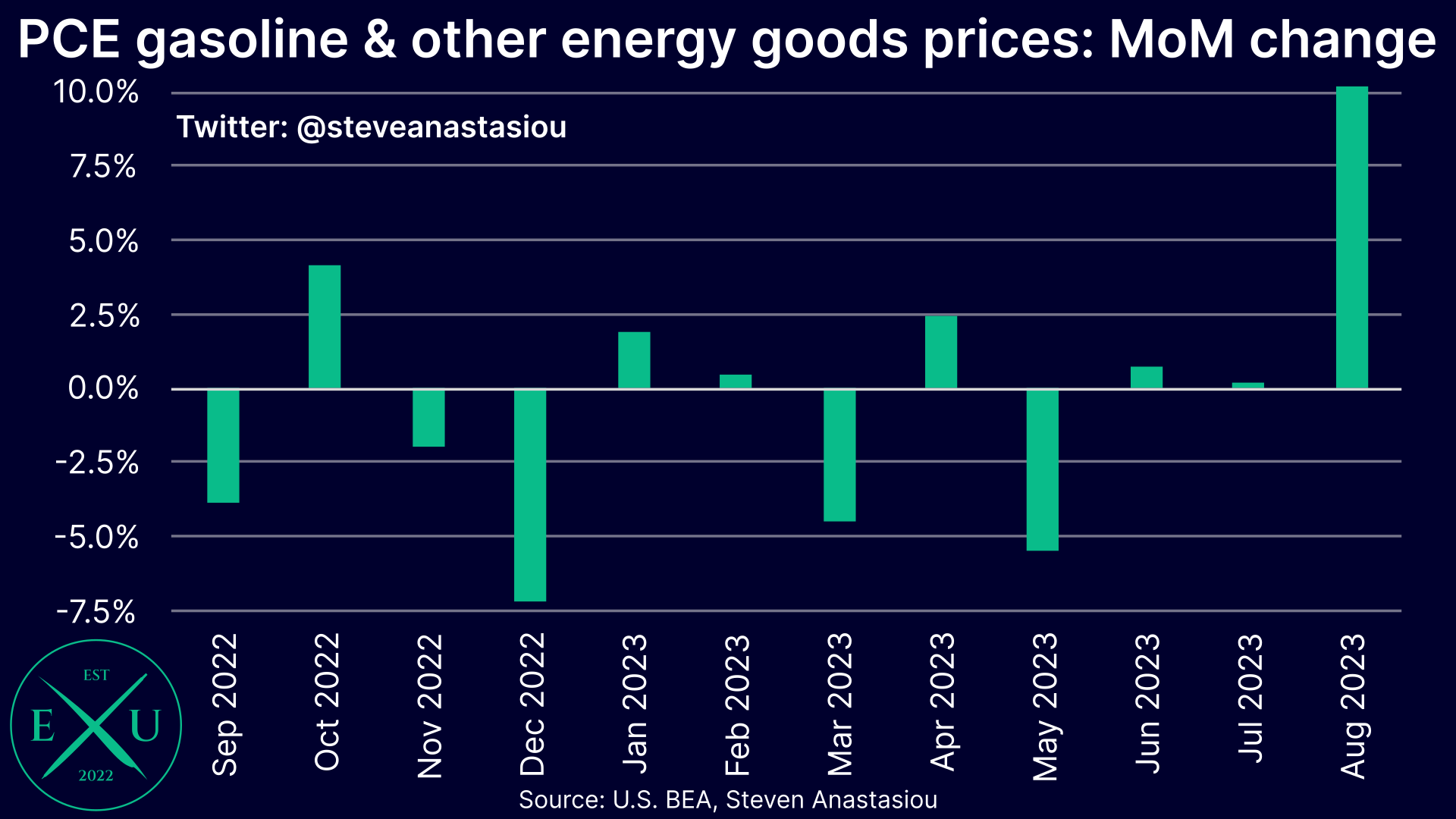
It's important to note that despite higher oil prices, RBOB (wholesale) gasoline prices have fallen significantly in recent weeks. As a result, regular average gasoline prices are now below their August average.
Services prices saw a significant moderation in MoM growth in August, with growth falling to 0.2% (from 0.5% in July). This came despite another month of elevated growth in the PCE’s housing services category (up 0.4% MoM) and in-part reflects the non-repeating of the MoM surge in imputed portfolio management costs in July, an item that can see significant volatility.
Services prices excluding energy and housing, which is a key focus of the Fed, rose just 0.1% MoM, which is the lowest monthly growth that’s been seen since November 2020.
Recent price trends: 3-month annualised changes
Breaking the PCE Price Index down into its key components, durable goods prices have not only disinflated, but are recording relatively huge levels of deflation: 3-month annualised growth is -5.4%, the largest decline on RECORD with data dating back to 1959!
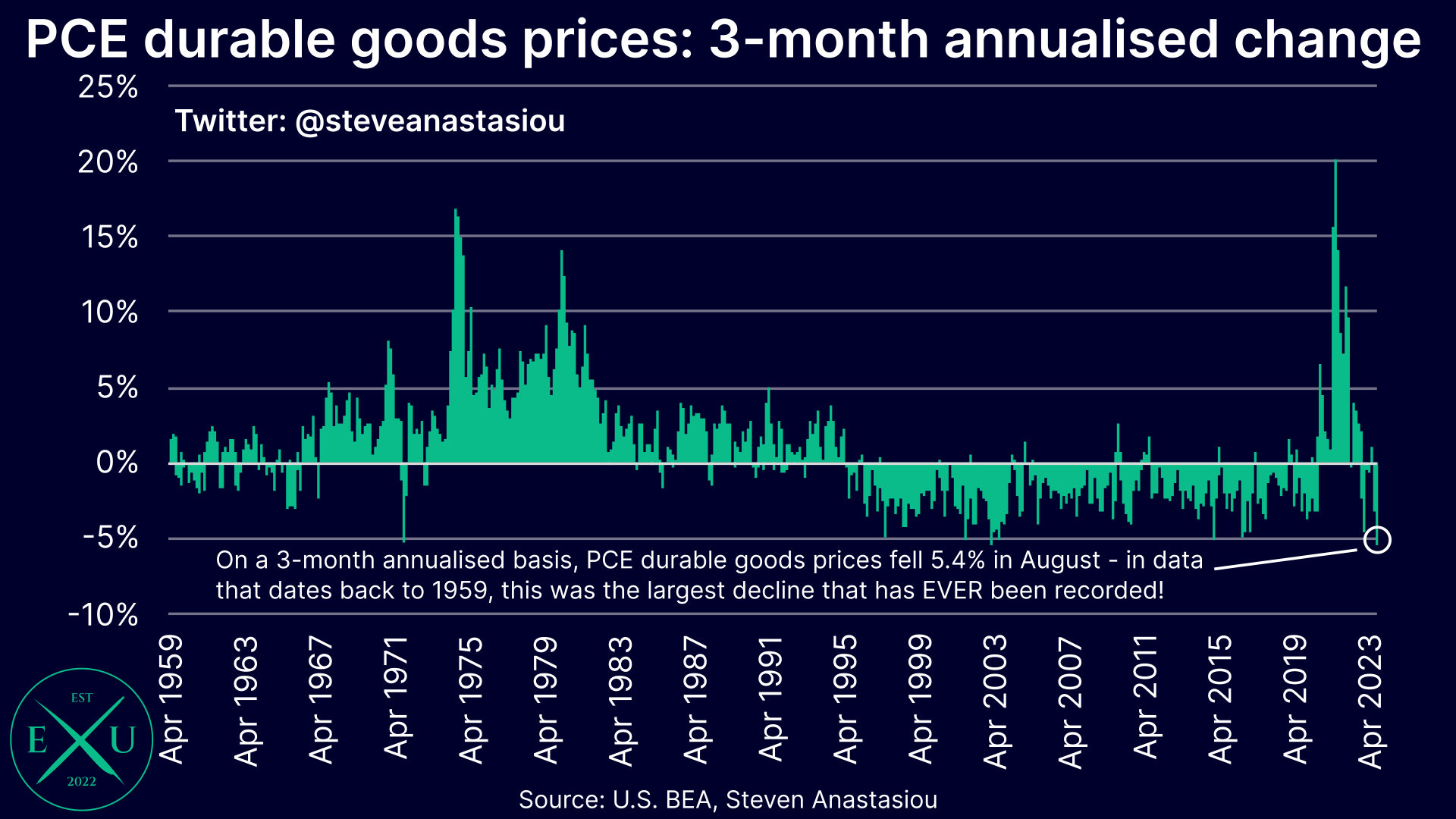
While 3-month annualised nondurable goods price growth has risen to 5.9% on the back of the gasoline and energy goods component (up 53.5%), all other nondurables categories have recorded 3-month annualised growth of 2.2% or less, with disinflation clearly widespread.
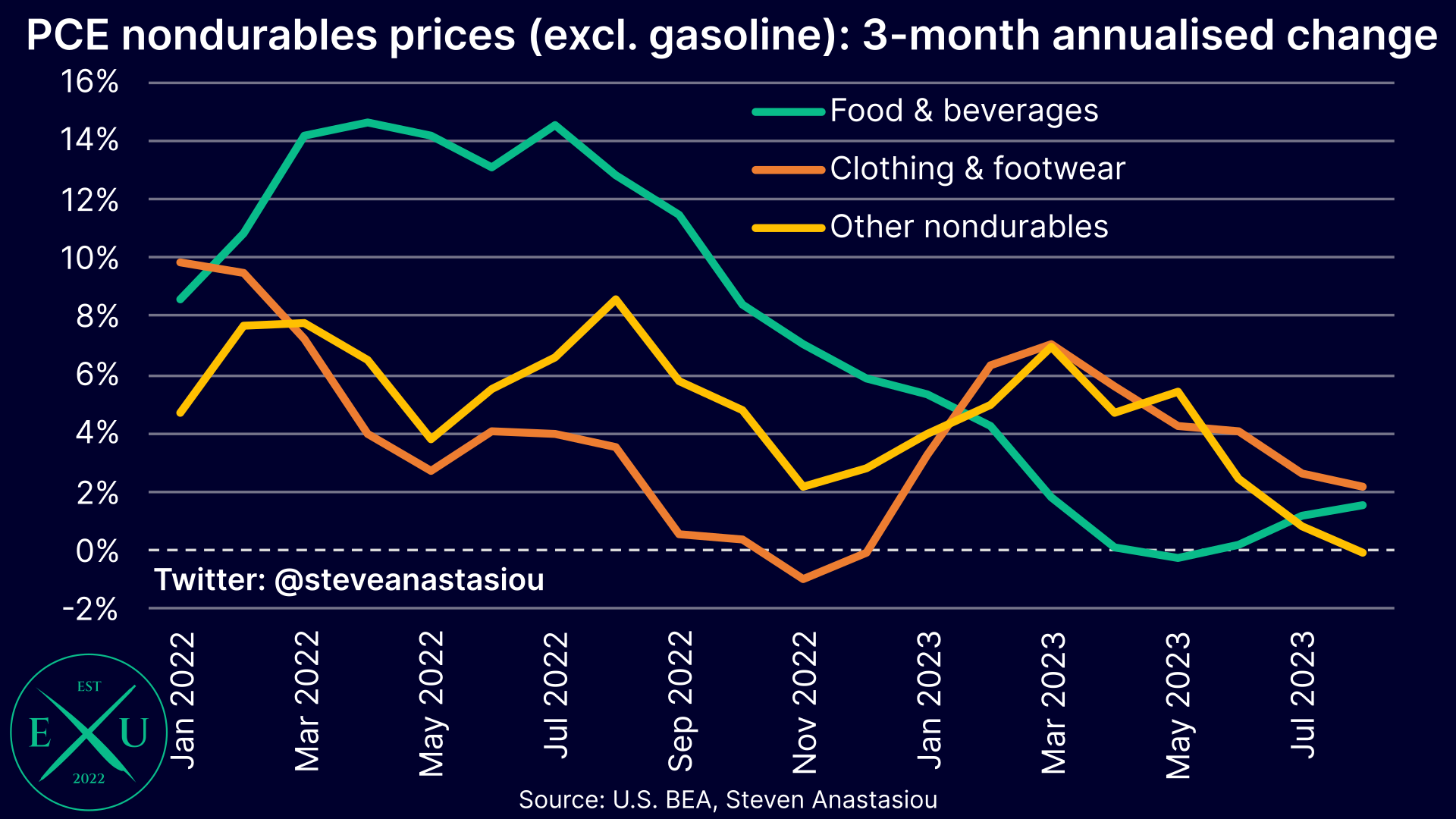
Services prices, which are more lagging, show a more mixed picture, with some components seeing significant disinflation, and others seeing continued material price growth. Looking at services prices as a group, one can see that major disinflation has been seen in 2023.
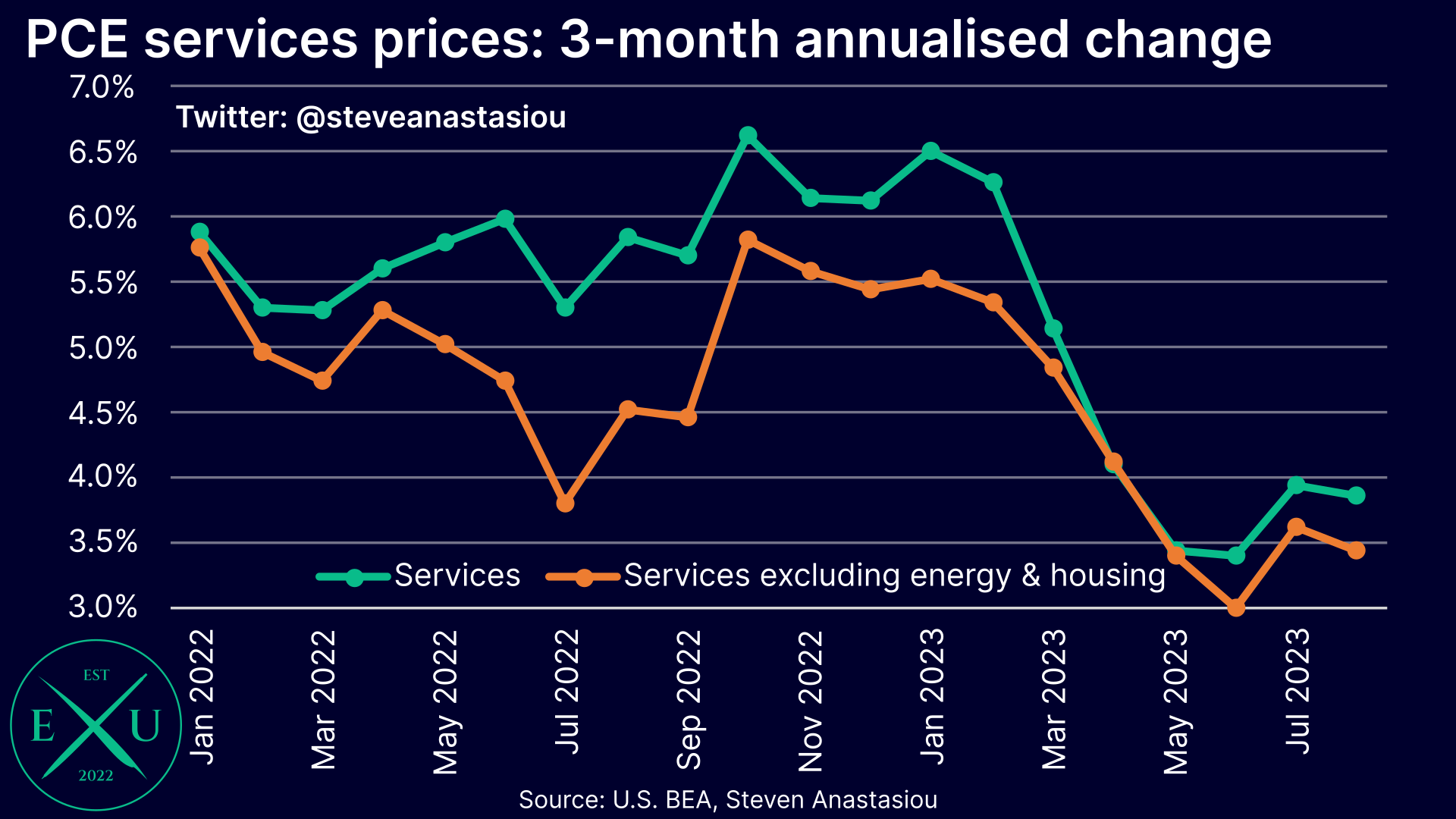
The July bump in 3-month annualised services price growth was significantly influenced by the aforementioned jump in portfolio management costs - an imputed measure which can see significant volatility. This makes it important to also look at market-based PCE inflation measures, where, on a core basis, 3-month annualised growth has fallen to just 1.5%.
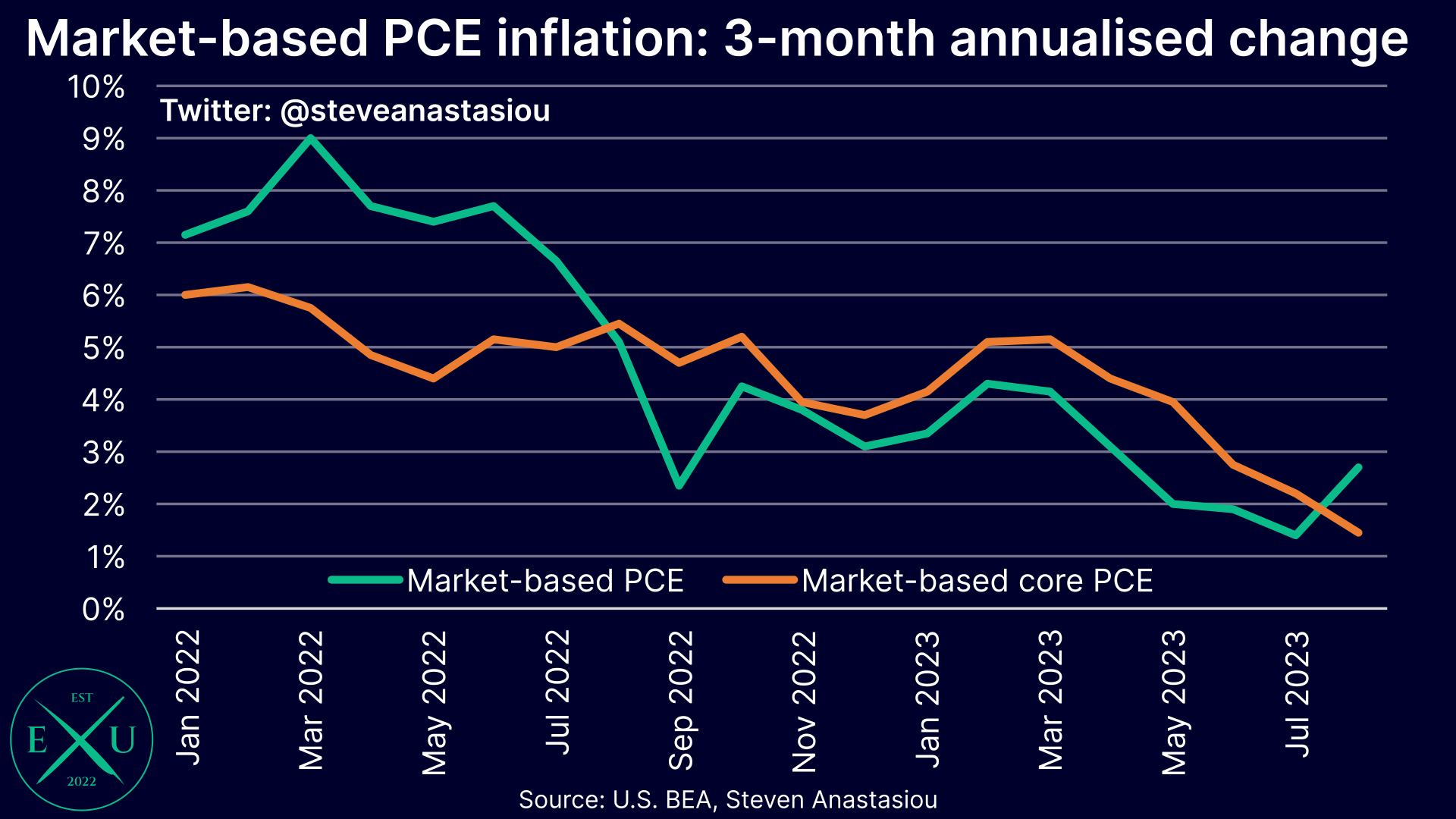
Longer-term price trends: 6-month annualised & YoY growth
The above underlying trends have resulted in a major deceleration in longer-term aggregate PCE inflation measures.
While rising in August, headline PCE growth has been clearly trending lower on both a 6-month annualised, and YoY basis, for a significant period of time.
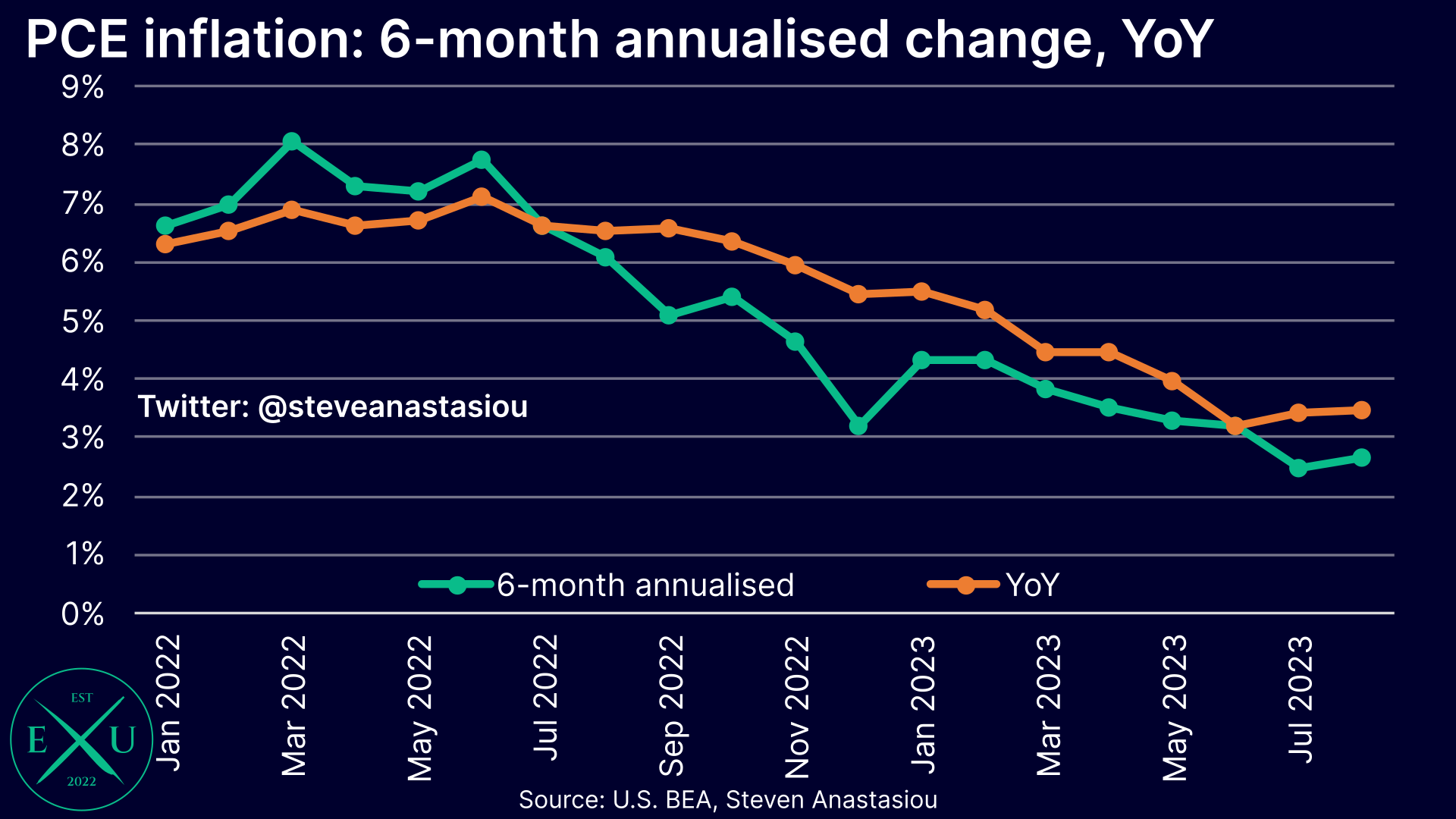
Core PCE inflation, which isn't directly impacted by higher oil prices, has continued to decelerate in recent months. The material gap that's emerged between 6-month average & YoY price growth suggests that should recent trends continue, YoY growth is likely to fall materially.
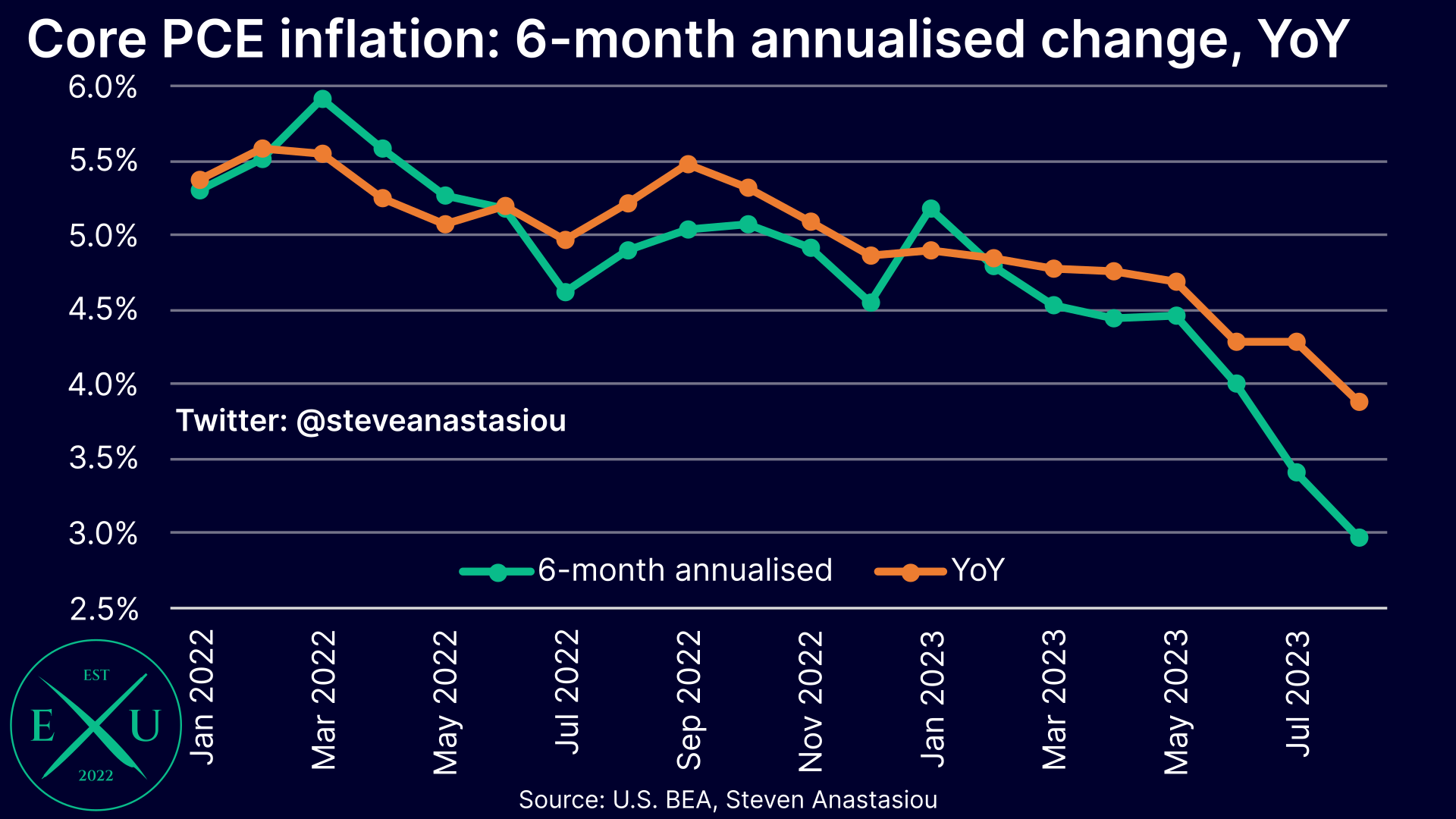
Supercore PCE inflation, which excludes the lagging housing component (which we know will decelerate significantly over time given the movement that's already taken place in underlying spot market rents) from core PCE inflation, has decelerated to 2.4% on a 6-month annualised basis, while YoY growth has fallen to 3.2%.
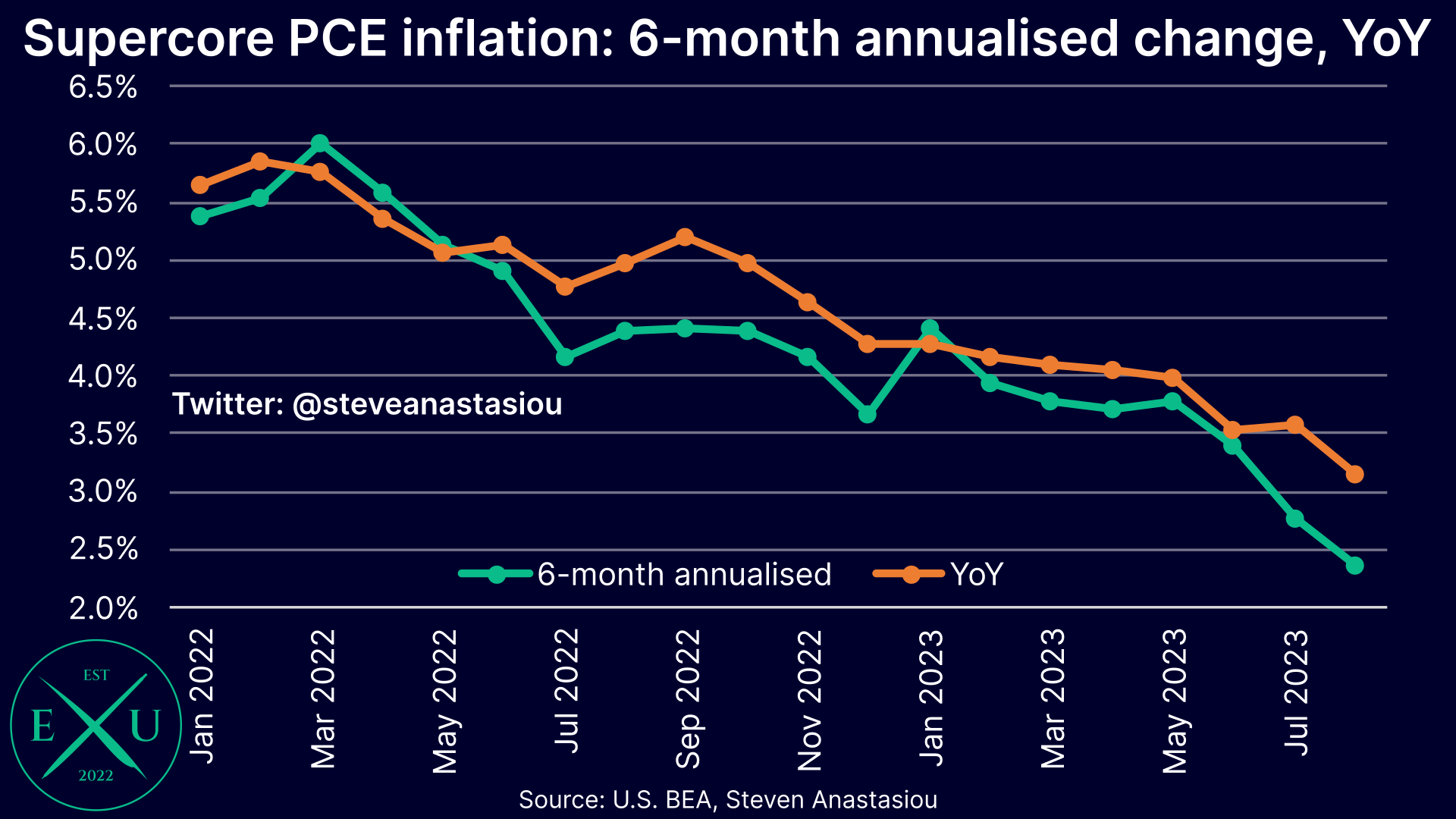
Looking at supercore PCE inflation on a 3-month annualised basis, shows growth of just 1.5%: representing the lowest reading since November 2020 and a return to its pre-COVID range.
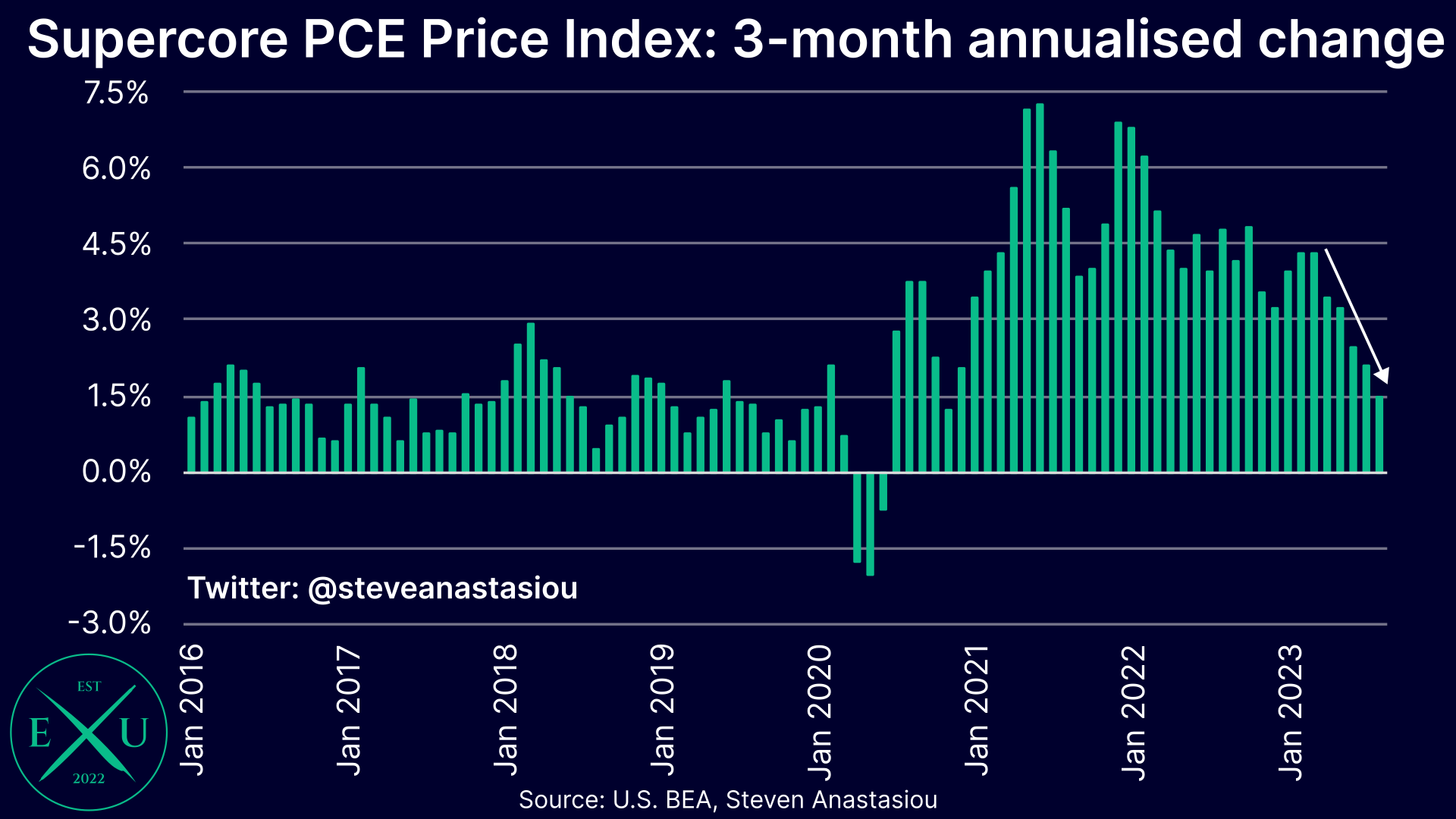
All-in-all, with core & supercore PCE inflation continuing to show that disinflation is deepening, the latest PCE inflation data does not support another rate hike. This is made particularly true in light of ongoing QT, and significant declines in commercial bank lending growth & M2.
Should you want even more detail, you can view my latest report in full at this link. To keep up-to-date with my latest work, be sure to follow me here on Livewire.
4 topics

